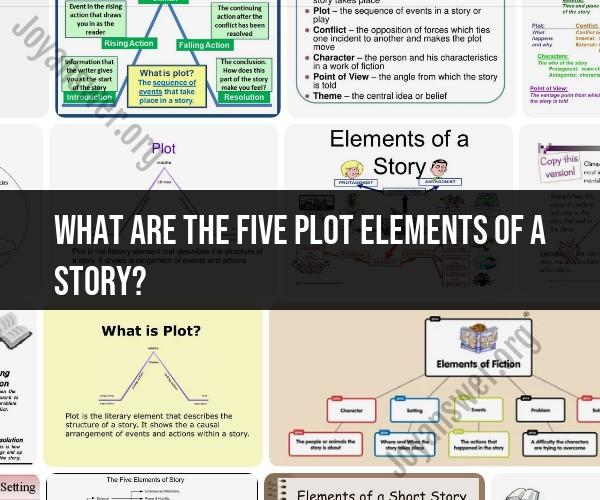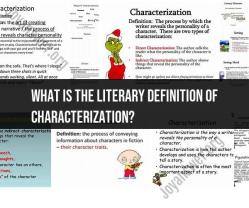What are the five plot elements of a story?
The five essential plot elements of a story are the key components that make up its narrative structure. These elements help create a well-rounded and engaging storyline. The five plot elements of a story are:
Exposition: The exposition is the beginning of the story where the setting, characters, and initial situation are introduced. It provides essential background information to set the stage for the events that will follow.
Rising Action: The rising action is the series of events that build tension and develop the central conflict of the story. It involves complications, obstacles, and challenges that the characters face as they work toward their goals.
Climax: The climax is the turning point of the story and the most intense moment. It's the point at which the central conflict reaches its peak, and the main character faces a critical decision or revelation.
Falling Action: The falling action follows the climax and shows the consequences of the decisions made during the climax. Loose ends are tied up, and the story begins to move toward resolution.
Resolution: The resolution, also known as the denouement, is the conclusion of the story. It reveals the final outcomes of the central conflict and often provides insight into the characters' futures. It offers closure to the narrative.
These five plot elements work together to create a coherent and engaging story structure. They guide the reader through the narrative, building tension and anticipation until the story reaches its satisfying conclusion. Well-crafted stories effectively utilize these elements to engage the reader and convey the author's intended message or theme.
The Five Key Plot Elements in Storytelling
The five key plot elements in storytelling are:
- Exposition: The exposition introduces the setting, characters, and conflict of the story.
- Rising action: The rising action is the series of events that lead up to the climax of the story. The conflict intensifies and the stakes get higher.
- Climax: The climax is the peak of the story, where the conflict is resolved.
- Falling action: The falling action is the series of events that follow the climax. The conflict is resolved and the story comes to a close.
- Resolution: The resolution is the ending of the story. It ties up loose ends and provides closure for the reader.
These plot elements are essential for crafting a compelling story. By understanding and using these elements effectively, you can write a story that will keep your readers engaged from beginning to end.
Unveiling the Quintessential Plot Components in a Tale
The quintessential plot components in a tale are the elements that make up the story's structure and drive the action forward. The five key plot elements listed above are the most fundamental, but there are a few other components that can be important for developing a well-rounded story.
One such component is the inciting incident. This is the event that sets the story in motion and triggers the conflict. It can be a major event, such as a murder or a natural disaster, or it can be something more subtle, such as a chance encounter or a change of heart.
Another important component is the subplot. A subplot is a secondary storyline that is interwoven with the main plot. Subplots can be used to add depth and complexity to the story, or to provide comic relief or social commentary.
Finally, no story is complete without a resolution. The resolution is the way the story ends. It should be satisfying and provide closure for the reader.
Plot Essentials: The Five Building Blocks of a Story
The five key plot elements are the five building blocks of a story. By understanding and using these elements effectively, you can craft a compelling story that will keep your readers engaged from beginning to end.
Here are some tips for using the plot elements effectively:
- Start with a strong exposition. The exposition should introduce the setting, characters, and conflict of the story in a clear and concise way.
- Build the rising action gradually. The rising action should build in intensity and suspense. Don't rush the rising action, or your readers will get bored.
- Create a satisfying climax. The climax is the most important part of the plot. It is where the conflict is resolved and the story comes to a head. Make sure the climax is exciting and satisfying for your readers.
- Don't forget the falling action. The falling action is important for resolving the conflict and tying up loose ends. Don't just rush to the end of the story after the climax.
- Write a satisfying resolution. The resolution is where the story comes to a close. It should provide closure for your readers and answer any lingering questions.
By following these tips, you can write a story with a compelling plot that will keep your readers engaged from beginning to end.












